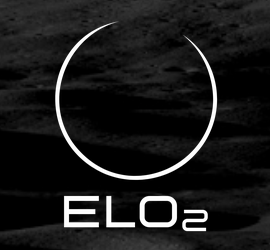

The autonomous robotic technology company, the ELO2 consortium, has unveiled a prototype of what may become Australia’s first lunar rover. The consortium is working on the project under the Australian Space Agency’s Moon to Mars Trailblazer program that aims to land the rover on the Moon as part of a future NASA Artemis mission later this decade.
The first glimpse of the rover prototype showcases the unique technology and design elements built into this specialized rover. If selected for the mission, on the Moon’s surface, it will be tasked with transporting lunar regolith (Moon soil) to a NASA-run facility for the extraction of oxygen. The initial prototype focuses on testing chassis and suspension subsystems and features an early design of a collection device and special wheels that will enable the rover to cross the Moon’s challenging terrain.

The rover prototype’s unveiling marks an essential step in this process, focusing initially on testing chassis and suspension subsystems while paving the way for iterative enhancements and expanded functionalities throughout Stage One of the Trailblazer program. ELO2 is one of two consortia chosen by the Australian Space Agency to develop early-stage design concepts for a Moon rover.
This prototype and the following iterations are a practice in de-risking critical technologies, validating requirements, and ensuring their seamless integration — crucial for the success of Australia’s national flagship mission. Prototyping such as this is an important step in testing designs for continuous improvement; something that is essential in the space industry.

Beyond transporting regolith, the rover would autonomously navigate the lunar environment, locate and collect regolith, and is an essential element to enable NASA’s in-situ resource utilization facility to operate. There, oxygen will be extracted from the regolith, which can be used for Artemis astronauts to breathe and for spacecraft fuel — essential elements for a sustained human presence on the Moon.
Joseph Kenrick, ELO2 Technical Director with Lunar Outpost Oceania, says, “Our consortium’s unveiling of the lunar rover prototype is a testament to Australia’s commitment to space exploration. Through the Trailblazer program, ELO2 is spearheading efforts to de-risk critical technologies while striving to deliver a successful and impactful mission for Australia. This unveiling marks the beginning of an exciting journey and invites every Australian to be part of our nation’s cosmic endeavors.”

The public unveiling of this early rover prototype aims not only to showcase progress but also to engage the Australian public. ELO2 seeks to make space more accessible by actively involving citizens in space exploration and hopes that the display of this prototype will encourage comments, feedback and ideas. Part of the rover design process is involving the Australian public through participation in a range of initiatives, such as the Big Dipper and Little Dipper Challenges which invite people of all ages to present ideas for one element of the rover — the regolith collection device or scoop, for the chance to win prizes and badges. This unveiling, along with the today’s naming of the rover by the Australian Space Agency, underscores the reality of Australia’s unique capabilities, STEM engagement and innovative spirit that places the country in a prime position to contribute to missions on the Moon and beyond.
“ELO2 is designing and developing world-leading technology, capitalising on Australia’s strengths, and leveraging Trailblazer funding to develop dual-use critical technologies able to support technology development for AUKUS Pillar II. This initiative extends beyond advancing our space industry; it encompasses critical applications in climate change monitoring, critical mineral sourcing for Earth’s green transition, and remote operations in healthcare. This integrated approach not only benefits our space endeavors but also contributes significantly to vital industries on Earth,” stated Ben Sorensen, Director of Innovation and Commercialization at EPE.”
The ELO2 consortium is a collaborative venture that has combined the strength of Australia’s leading industry partners and research institutions towards the goal of creating Australia’s first lunar rover. This initial prototype is an early step in this advanced design process, that involves continuous enhancement of the rover’s capabilities throughout Stage One of the Trailblazer program. As the mission progresses, the consortium aims to engage the public, offering insights into the advancements, challenges and discoveries on the path toward Australia’s lunar exploration milestone.
